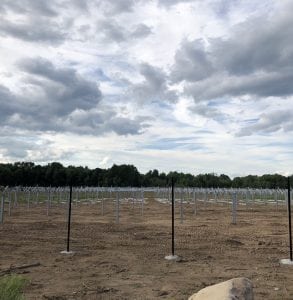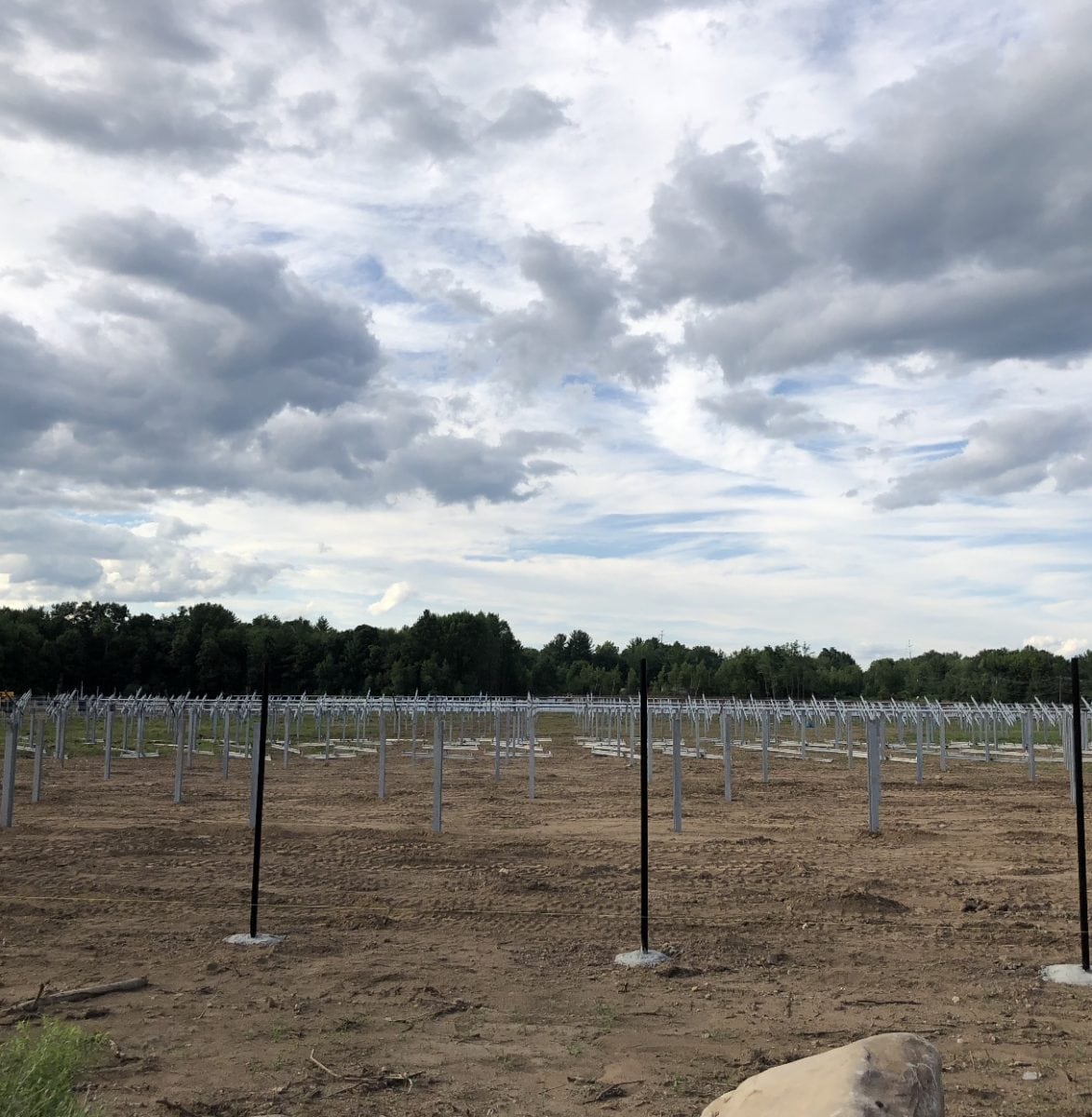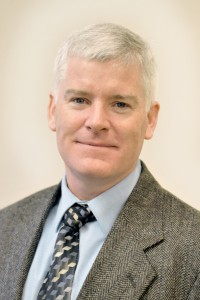by Carolyn Noel, intern, UMass ’19

Construction is underway at a solar farm being built at 1040 Southampton Rd Westfield. (Photo by Carolyn Noel)
WESTFIELD— What was once not even an area of concern for most now seems to be at the forefront of the conversation, with people everywhere supporting the movements of going green and saving the environment.
The city of Westfield is contributing to this movement in its own way by building solar fields to fuel its homes in a more eco-friendly manner. Westfield already has three completed solar fields in use and a fourth is currently being built at 1040 Southampton Road.
The city is priding itself on having these solar fields and claiming that they are bringing a variety of benefits to the community in many ways.
In Westfield, every resident gets their energy from Westfield Gas and Electric. The G&E purchases different types of energy sources ranging from nuclear and fossil to hydro and solar. Westfield residents automatically use a portion of eco-friendly solar energy each day just by living in Westfield and using the G&E.
“Here in Westfield we have a pretty diverse energy portfolio. Our electricity comes from a pool of energy sources. In 2017, only 26% of our electric supply came from fossil generations. The rest came from non-emitting generators: nuclear, wind, hydro, and solar,” a representative of Westfield Gas and Electric said.
Going green and using these earth-friendly energy sources has been very important to the entire state of Massachusetts in recent years. The Baker administration is working hard to make Massachusetts a green state. Because of this, the administration has established tax credits for renewable energy, known as solar renewable energy credits (SREC’s). This has been the financing tool for these solar fields and because of this, there has been a spike in the development of solar projects.
The Westfield City Advancement Officer Joe Mitchell explained this further.
“The people who build the solar fields are typically private developers who identify a sight, work with the local community, work with the local power company, and will then try to lease a piece of land for 20-25 years to build the solar project. They deal with all the costs. Generally speaking, private developers seeing an opportunity will start research, do the engineering work, and build solar projects,” he said.
With these solar tax credits and the state’s financing, taxpayers do not see an increase in their own taxes because of solar fields being built. The money needed for the fields is privately funded.
Having a renewable energy source like solar available in Westfield is also bringing an increase of businesses and citizens to the city. Many people see the city as taking steps in the right direction and advancing themselves with this eco-friendly option.
“Some of the newer companies or ones that are run by millennials are very energy conscious and very environmentally conscious. People do come to me about opening a business in Westfield and some of them do ask about our energy portfolio. We are a green city and people do care. I think it is helpful for business in Westfield,” Mitchell said.
Though Westfield does have solar fields in use, with our ever-changing New England weather, it is not always the number one energy source being distributed to homes. On these recent hot July days the solar energy is at its peak and is at high use in homes. In December, or on a cloudy day, there may be less solar energy generated in Westfield. The solar energy will still be produced and used, but it is just not as much. Because of this, Westfield G&E makes sure to have enough backup power to fuel our local homes and not see a loss of electricity provided to users.
Though solar energy can be unpredictable, it is still important.
“For every megawatt of solar that is produced, that is one less megawatt Westfield G&E has to buy from a fuel burning source. It is beneficial. Overall, we in Westfield are consuming less greenhouse gas emitting energy sources. We care about our environment and we are looking forward, as far as energy consciousness and environmental consciousness goes,” Mitchell said.
One question many Westfield residents may have is if having their own roof-top solar would be beneficial to them as well. The overall answer seems to be that it is complicated. Roof-top solar can be beneficial for some residents, but for others it may make their electricity bill more expensive.
It is important to talk to the Westfield G&E about your own individual rate before deciding to install rooftop solar. A part of every Westfield resident’s energy will already be partially solar due to the fields located in town and the way Westfield G&E distributes the energy.
Looking to the future, Westfield hopes to continue to be more green. Another renewable energy source to think about having are wind turbines.
“If somebody did want to set up a wind turbine or a wind farm I think it would be great. One: it’s a good renewable energy source. Two: it stimulates our economy. Somebody has to build the wind turbine and, overall, it would help the tax payer,” Mitchell said.
The fourth solar project on Southampton Road will be one more green energy source located in Westfield that will help fuel hundreds of homes. As one Westfield G&E representative said, “It’ll produce just under 4 megawatts. It’ll supply about 750 homes, which is a huge number.”
If you would like to know more about solar energy being used in Westfield and in your own home, customers are encouraged to contact Westfield G&E by visiting their web site, https://www.wgeld.org/ or calling at (413) 572-0000.
With this newest solar field, Westfield is continuing to take steps in a more environmentally friendly direction and help save the environment.







